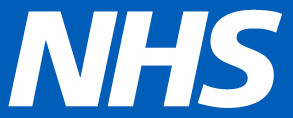Case study: North East Ambulance Service NHS Foundation Trust
We employ more than 2,000 staff and respond to over 360,000 emergency and urgent incidents per annum. Our fleet of more than 500 vehicles clock-up close to 10 million miles per year. The A&E service and Patient Transport Service are both supported by the NEAS contact centres based at Newburn Riverside and Hebburn, which manage in excess of 450,000 calls per annum.
What we did
Upon receipt of the original documentation from the Academy, initially we reduced the information pack so that it was more user friendly to the staff that would be using the toolkit. We decided to ask staff to take part in the pilot using the scores from our recently completed Talent Management programme, as those higher scorers were potentially more engaged in staff development and proactive in their approach as Team Leaders. These “key champions” had individual one to one familiarisation sessions with all the organisational lead (effectively a mini teach) including milestones and timescales. The new toolkit was then sent out to these (25) members of staff, with the instructions to complete them during the staff appraisal/performance review, which were being undertaken at the same time. This was the only effective way for operational staff to engage in this pilot as their time with their staff is so limited due to the geographical remote working that they do. The organisational lead subsequently maintained good and regular contact with the participants.
Things we learnt
The feedback from Team Leaders and their staff following their appraisal and the additional use of the MPCT was very encouraging. Staff felt motivated and valued, and Team Leaders suggested the ‘bank’ of questions gave them a sound base to direct their conversation from but the real proof in its success would be seeing that identified development happens. I would therefore recommend the toolkit to other organisations, but believe the effectiveness of its implementation lies with the organisation rather than the toolkit provider. I also think ambulance services have the additional challenge of their staff being remote workers and would recommend it being embedded into performance appraisals for other ambulance Trusts.
What worked well
This tool provides a clear and useful process for identifying those staff members (100 staff) who may have potential/talent not already known to (or utilised by) the Trust. The tool provides a framework for generating a conversation and in particular can be useful to support staff new to managerial roles who need to appraise staff.
Challenges to implementing the process
After simplifying, the toolkit was much more user friendly. It was used successfully by the pilot champions; there were some difficulties with the return of the documentation. This is however seen as an organisational problem, rather than a problem with the toolkit itself and if it was incorporated into the performance appraisal document there would be no requirement for additional paperwork to be completed.


Please sign in or register to make a comment.